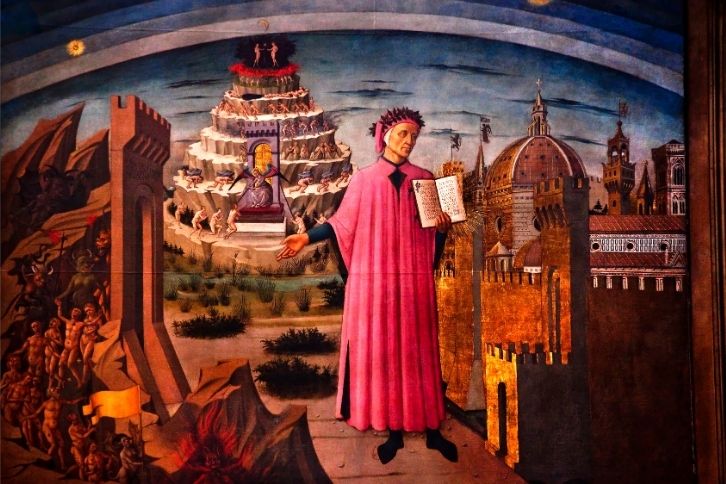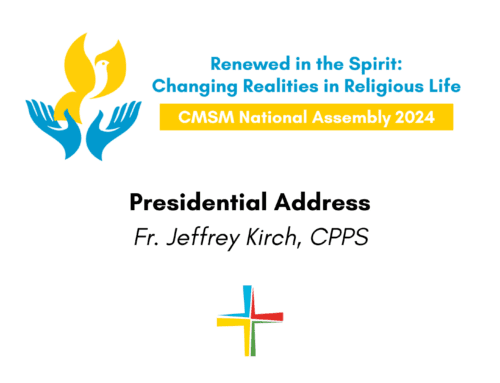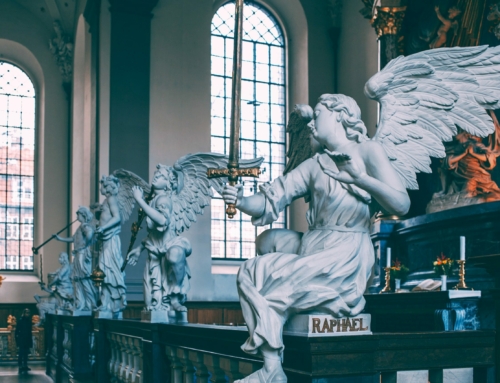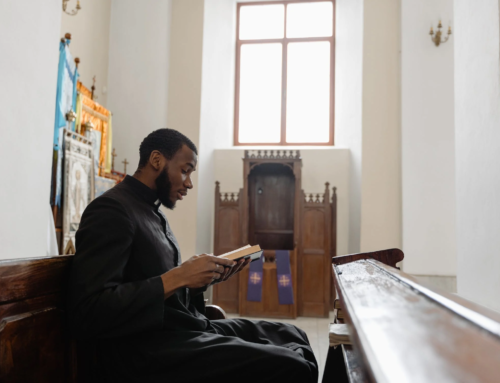Dante is not often thought of as a source that can speak to religious life. Yet, Pope Francis has recommended him to become better known in his recent letter Candor Lucis Aeternae, published on the 25th anniversary of Vita Consecrata. In this essay, Fr. Stephen Pepper, CSC draws a number of parallels between Dante’s masterpiece, The Divine Comedy, and Pope St. John Paul II’s teaching in Vita Consecrata, showing how they have overlapping and reinforcing themes. Click here to download a copy of this essay.
Pope Francis may be developing a reputation for himself as the pope of Dante. He has credited Dante’s influence on his first encyclical letter on faith.[1] He has proposed Dante as a “prophet of hope” for our times and a guide to the recovery of our sense of “the full human dignity of the human person.”[2] Most recently, the Holy Father has written for the occasion of the seven hundredth anniversary of the Italian poet’s death to recommend to the Church a renewed appreciation of his work and to make him “better known and appreciated, accessible and attractive, not only to students and scholars but to all those who seek answers to their deepest questions.”[3] One wonders if, somewhere in the back of his head, Pope Francis was aware that his apostolic letter in honor of Dante also happened to coincide with the twenty-fifth anniversary of Pope St. John Paul II’s promulgation of Vita Consecrata. From the perspective of the love the moves the sun and other stars (Paradiso 33.145), this may not be so coincidental. Rather, it may be a providential invitation for men and women religious to engage with the thought, imagination, and spirit of the layman who most famously wrote The Divine Comedy, especially as it may be seen to reflect St. John Paul II’s teaching in Vita Consecrata.
And as a matter of fact, a keen resonance can be felt among Pope Francis’s Candor Lucis Aeternae, The Divine Comedy, and Vita Consecrata, suggesting Dante’s poetry to be a promising source for reflection on religious life. Dante takes a profound interest in topics particularly pertinent to religious life in his day, and his insights continue to remain relevant for the more varied forms of religious life in centuries following his own. Without being exhaustive, these include the weightiness of vows, the absolute value of poverty in the life and witness of the Church, the ongoing need for renewal, the daily and seasonal rhythms of the Liturgy of the Hours, and the exemplarity of religious founders and contemplative figures. Even more than that, the dimensions of the religious vocation that give structure to and find expression in Vita Consecrata—as confession of the Trinity, sign of communion, and service of charity—may be seen to be reflected in Dante’s own concern in writing The Divine Comedy to present an image of humanity as a communion of life and love dwelling in the heart of the self-knowing, self-loving, and self-smiling Trinity (Paradiso 33.124–32). The Divine Comedy and Vita Consecrata share the same motive thrust “to show that the Incarnate Son of God is the eschatological goal towards which all things tend, the splendor before which every light pales, and the infinite beauty which alone can fully satisfy the human heart.”[4] In other words, Dante’s poetic vocation may be said to partner with the religious vocation in looking forward to the communion of life in Christ that God wills for creation.
The resonances go even deeper. Not only do religious life and Dante’s poem share the same goal and hope, but they also show forth together the substance of their hope. The Divine Comedy depicts religious life in the spirit of what Vita Consecrata holds religious life up to be, namely, an image of the Trinity recognized in the human image that comes to light in communion of life and love of creation. Vita Consecrata describes religious life as a lived contemplation, through communal profession of the evangelical counsels, of the transfigured Christ. Such a consecrated configuration to the heart of Christ shows forth—indeed, attracts to—the mystery of what it means to say that the Father loves the Son (see John 3:35).[5] Dante’s own transformative vision of Christ in glory culminates in his seeing “our image” (i.e., the Incarnation, but also Mary, Beatrice, Dante, and even us) depicted in the Second Person of the Trinity in Paradiso 33, but the light and significance of “our image” also starts to shine on Dante in a special way in the Heaven of the Sun (Paradiso 10–14). The Heaven of the Sun is the fourth of the nine celestial spheres through which Beatrice leads Dante on the final leg of his journey into the vision of God. This is also where Dante encounters saints renowned for their wisdom, including many religious, most notably Thomas Aquinas and Bonaventure.
In Dante’s imagination the sun appears as a heaven of light, music, and dance, and the way he introduces the saints of the sun (or textually, the way they introduce themselves to him) weaves together the three great structuring themes of Vita Consecrata in poetic harmony. For instance, Paradiso 10-14 has a greater concentration of Trinitarian confessions and anthems than just about any other part of The Divine Comedy (except for Paradiso 30-33). This is how Dante introduces Paradiso 10:[6]
Looking within his Son through that same Love
that Each breathes out eternally with Each,
the first and three-fold Worth, beyond all words,
formed all that spins through intellect or space
in such clear order it can never be,
that we, in wonder, fail to taste Him there (10.1–6).
The first group of wisdom saints who appear to Dante are described by their satiety in apprehending the processions of the divine persons:
So shining there was that fourth family
that’s always fed by one exalted Sire
with sight of what He breathes, what Son He [begets] (10.49–51).
The songs that this “fourth family” sing, moreover, are entirely taken up by and with the mystery of the Trinity:
Those songs there praised not Bacchus nor Peana.
They sang three persons all divine in kind,
and in one person human and divine (13.25–27).
The one and two and three who always lives
and always reign in three and two and one,
uncircumscribed and circumscribing all,
had, three times now, been lauded in the songs
of every spirit there, the melody
a condign prize, however great the worth (14.28–33).
The Trinity is also reflected in the imagery of these cantos. The two “crowns” of wisdom saints that have circled Dante and Beatrice from the beginning of Paradiso 12, for example, are said to reflect each other like a double rainbow, anticipating how Dante describes the Father and the Son as appearing to him in his final vision of the Trinity (33.118–19). A third crown of saints that appears around Dante and Beatrice is praised in Paradiso 14.76 as the “true spark shower flying from the Holy Breath” and again looks forward to Dante’s vision of God as three circling spheres of three colors and one span, the third of which seems fire breathed equally by the other two (33.115–20). These are images and words to which the religious life may be understood to be a lived analogue in bearing witness to the marvels wrought by the Trinity, John Paul II says, “not so much in words as by the eloquent language of a transfigured life, capable of amazing the world.”[7] Dante’s own amazement at what is said and prefigured of the Trinity in these cantos (see also 13.52–87) reflects the effect that the religious life is said to be able to have on a world made in the image of love, goodness, and beauty itself.
As the Trinitarian confession of religious life in Vita Consecrata is seen in configuration to Christ and commitment to the communal life,[8] so too is Trinitarian confession in Dante’s Heaven of the Sun not to be understood only in terms of what is said or represented of the Trinity, but also in the communion of life shared among the members of Christ’s body. Significant in this respect is the Bride of Christ imagery shared by both texts. Consecrated life “becomes a particularly profound expression of the Church as the Bride,” John Paul II says, on account of its overshadowing by the Spirit, its configuration to the Son, and its reflection of the Father’s glory.[9] The love that Dante’s wisdom saints have for each other and for God is likewise described as that of a bride for her divine husband calling others, like a clock, to share their morning tryst/prayer:
And now, like clocks that call us at the hour
in which the Bride of God will leave her bed
to win the Bridegroom’s love with morning song,
where, working, one part drives, the other draws –
its ‘ting-ting’ sounding with so sweet a note
that now the spirit, well and ready, swells –
so in its glory I beheld that [first] wheel
go moving round and answer, voice to voice,
tuned to a sweetness that cannot be known,
except up there where joy in-evers all (10.139–48).[10]
It bears emphasizing that the souls of the saints who appear to Dante in the sun do not do so as individuals but in gradually widening rings that appear around each other, with Beatrice and Dante at their center, and they wheel, dance, and sing together in imitation of the Love that Dante comes to see breathed equally between the Father and the Son. The bridal love of the first ring evokes with the arrival of the second ring an order of charity “as unique as the Trinity.”[11] It then spills over from there in cascading examples of communion made real between people who were intellectual opponents in life, belonged to rival religious orders, espoused seemingly competitive orders of wisdom, or were at odds in other ways during their earthly life. Fittingly, given what John Paul II says about the genius of religious for communion,[12] Dante chooses two of the great religious figures of his day, Thomas Aquinas and Bonaventure, to be the primary spokespersons of the Trinitarian sign of communion that is his Heaven of the Sun.
Thomas and Bonaventure also show Dante how this Trinitarian sign of communion extends into a “service of charity” towards himself and the suffering world that he represents in heaven.[13] They do this by praising the virtues of each other’s religious founders to Dante (i.e., SS. Francis and Dominic) and thereby sealing Dante’s humanity in a way with the selfsame light and love in which they all together are made beautiful (see Paradiso 12.31–33). Thomas, before launching into a particular praise of Francis, lauds each founder:
The providence that rules the universe,
in counsels so profound that all created
countenance will yield before it finds its depth,
intended that the Bride of Christ (He wooed her
with His sacred blood, His cries raised high)
should go to her Belovèd in delight,
sure of herself and truer still to Him,
and so ordained two princes that, on either side,
should walk along with her and be her guide.
The one was seraph-like in burning love,
the other in intelligence a splendour
on the earth that shone like Heaven’s cherubim.
I’ll speak of one. For—take whichever man—
in prizing him, you’ll praise the other, too.
Their different actions served a single plan (11.28–42).
Their own hearts set on the divine countenance as reflected in the Bride of Christ, the two “princes” together reflect the beauty of the God in whom knowing and willing are one, and this gives them the strength, as Thomas intimates, to tend to the suffering face of the Church, to strengthen her and rouse her to the duty of her delight. Thomas and Bonaventure impress the dual image of their spiritual fathers upon Dante in order to give him a share in their spirit for his own prophetic mission to the Church in writing The Divine Comedy. Dante himself intends, moreover, to impress his readers with this image so that they make take up what John Paul II calls the “quest for divine beauty.”[14] This is a quest in which lay and consecrated readers alike can find themselves reflected in each other’s calls “to care for the deformed image of God on the [suffering] faces of their brothers and sisters.”[15]
In the narrated figures of Francis and Dominic and in the wisdom figures of Thomas and Bonaventure, then, Dante fashions a portrait of religious life that evokes the human image in vigilant hope and respect for itself as a marvel of Trinitarian communion. This portrait of religious life itself weaves together the three great themes of Vita Consecrata and shows how religious life can create harmonies (of harmonies) in the life of the Church—between human and divine communion, between earthly and heavenly society, of wisdom and charity, of charismatic identities, of lay and consecrated missions, of medieval and contemporary sensibilities. In the shared spirit of Dante and John Paul II, religious life draws out the harmonious nature of the Church and makes the Church better able to impart light, warmth, and new life to those whom she has been called to serve. For this reason, religious men and women may find their own spirits roused in the light and warmth of Dante’s Sun to take up Pope Francis’s invitation and to read the whole of The Divine Comedy.
—
[1] Pope Francis, Lumen Fidei, 29 June 2013, 4.
[2] Message for the Celebration of the 750th Anniversary of Dante’s Birth, 4 May 2015. See also Leonard J. DeLorenzo and Vittorio Montemaggi, eds., Dante, Mercy, and the Beauty of the Human Person (Eugene, OR: Cascade, 2017).
[3] Pope Francis, 25 March 2021, Candor Lucis Aeternae, 9.
[4] Pope St. John Paul II, Vita Consecrata, 25 March 1996, 16.
[5] Vita Consecrata, “Confessio Trinitatis,” 14–40, particularly 20–21.
[6] Robin Kirkpatrick, trans. and ed., The Divine Comedy, 3 vols. (New York: Penguin, 2006–7). There are a number of English translations of The Divine Comedy readily available online (e.g., Mandelbaum and Longfellow at https://digitaldante.columbia.edu/) or in print (e.g., Singleton, Hollander, Lombardo). I generally recommend Kirkpatrick for the lyricism of his translation and the richness of his commentary. Hollander is helpful for readers who want to follow the English closely along with the Italian and to supplement their reading with detailed notes on each canto. Mandelbaum is particularly hospitable to first-time readers of Dante.
[7] Vita Consecrata, 20.
[8] Cf. Vita Consecrata, “Signum Fraternitatis,” 41–71.
[9] Vita Consecrata, 18–19. See also section 34.
[10] Cf. Paola Nasti, “Caritas and Ecclesiology in Dante’s Heaven of the Sun,” in Dante’s ‘Commedia’: Theology as Poetry, ed. Vittorio Montemaggi and Matthew Treherne (Notre Dame: University of Notre Dame Press, 2010), 210–44.
[11] “Caritas and Ecclesiology in Dante’s Heave of the Sun,” 220.
[12] Vita Consecrata, 46.
[13] Cf. Vita Consecrata, “Servitium Caritatis,” 72–103.
[14] Vita Consecrata, 75.
[15] Vita Consecrata, 75.






